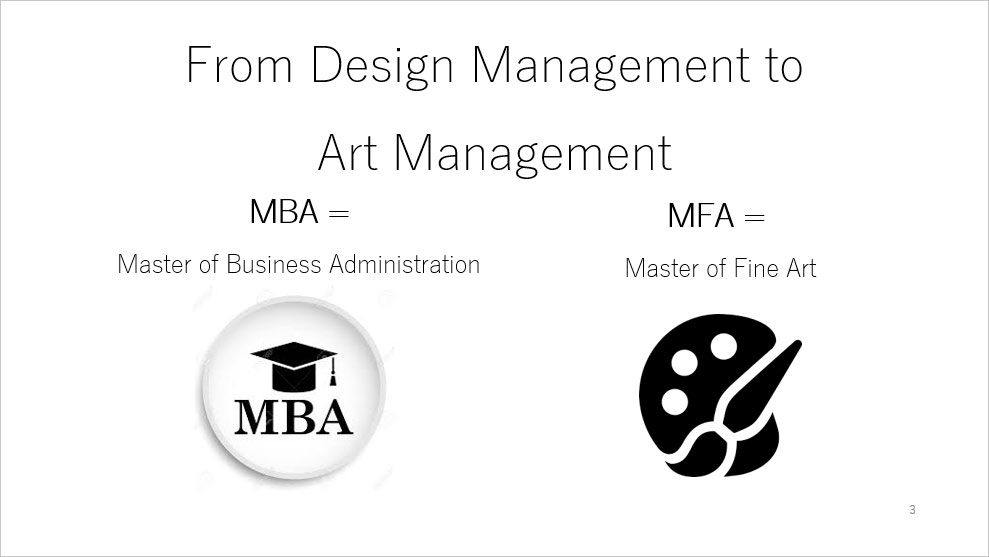What’s the difference between design and art?

When we talk about what is design and what is art, I first want to point out that the current trend is design. An MBA (Master of Business Administration) has long been a vital part of a career in business, but that simply isn’t enough on its own anymore. Art has become a prerequisite in business ? even for executives of national brands from P&G to Coca-Cola, it is said that if you can’t talk about art, you can’t reach the top of the business world. Options in Japan are admittedly limited ? if you search for places to acquire an MFA (Master of Fine Art), the only results are for universities in San Francisco and other places in the United States ? but I do think it is interesting that you can’t gain recognition in the business world if you don’t know about art.
Roughly speaking, the difference between design and art is the existence of a client. In design, there is an image of what a company wants to do and a means to solve that. A design is completed with intention. The client for art, on the other hand, is probably oneself, though that self may be influenced by society. At the very least, the client is certainly not a company. There is a huge difference between what design clients order and what a person can create independently through art. Some people say that companies do not need art because they pursue profit, but I think that those people are not really looking at our society. Design is a realistic way to solve an issue because it emphasizes functionality, while art plays a role in enhancing brand image that is not simply a function of the point of contact between the company, its product and society. So, unlike design, art cannot quickly provide a solution in the short term, the effect of its use is unclear and it is time-consuming to make.
The use of art in luxury brands is easy to understand. POLA, Shiseido, Louis Vuitton and Hermes all have their own museums and art galleries. As a branding professional, if all you want is a short-term, cost-effective solution, you don’t need art. Art helps to maintain the sense of luxury that a company or product has in the long term. Art helps to preserve the company’s image through a short-term loss in profit or the public furor that results from an accident of some kind.
Louis Vuitton is an easy-to-understand example. They maintained the traditions of their brand while creating products in collaboration with artist Takashi Murakami to meet both traditional and modern needs. In other words, they shattered tradition in order to save it. This destructive energy is the energy of art, and the top management of both Louis Vuitton and POLA understand this completely. They have a grounding in art.

